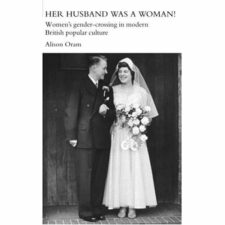The recent riots that dominated the British news have led to significant debate over the motivations of the crowd, and whether it was a form of political protest or simple criminality. Yet, for the historian rioting is nothing new. Riots have been a significant part of resistance to both political authorities and to the exploitation of the poor for hundreds of years. Moreover, whereas modern riots have been dominated by pictures of men, women were often at the forefront of rioting in the past, particularly in times of economic crisis.
Perhaps the most famous type of historical riot is the ‘food riot’. While often associated in the public imagination with medieval peasants and certainly not unheard of in earlier eras, food rioting was particular common in the eighteenth century, where an expanding population and a growing urban population that required food to be imported into towns put greater demands on food production and distribution chains. Yet, food riots were not simply motivated by hunger, though that played a part, but by poor government policy. They tended to focus around a sense of injustice, of deep-seated unfairness – that government officials were unfairly hoarding food, distributing it unfairly across social groups, or demanding too high a price. It was the political processes behind the division of food and wealth that motivated rioting, as much as simple need.
For example, in 1799, women and men in Gothenburg, Sweden, took out their frustration at grain prices on the owner of the local spirit distillery, smashing his windows and destroying his property, while simultaneously attacking the guards at City Hall, where the local gentry were holding a banquet to celebrate the birth of the Crown Prince. They thought that producing spirits (a product that the poor could not afford), which relied on grain, drove up prices, causing shortages amongst the poor. They similarly blamed the local government for not actively addressing this situation and allowing the poor to suffer. In Ireland, in the 1830s, during times of high food prices, the local population attacked barges of potatoes being taken for export, stealing the potatoes and selling them for a fair price, and attacking the men placed to guard the food. Such riots could extend beyond attacking the barges themselves, moving into town centres and attacks on customs houses (which collected taxes) and local government buildings, like the town halls or courts. The demands of the poor in such circumstances were not just to be provided with food, but for better and fairer policies around wealth distribution.
Women were often at the forefront of such movements. In England and France, they were often placed at the head of rioting crowds that drew in large numbers of both sexes and of people of a variety of age groups. In Ireland, groups that attacked bailiffs who tried to evict families from farms, were often headed by numbers of women. It is thought that as women were often the main purchasers of food for their families, the both experienced rising prices and saw the impact on their purchasing power, which provoked them to action. Yet, intriguingly, in Spain and elsewhere, some of the women who headed food riots were actually men dressed as women! This has raised speculation that women were placed at the forefront of riots as they were less likely to be attacked by police or soldiers and less likely to be prosecuted by the authorities. Female rioting may have been viewed as less threatening because women were not taken seriously as political actors, and so the political undercurrents that informed how the authorities viewed male protests, were not present. As a result, female rioting was not such a challenge to the state as male rioting, and meant that authorities may have felt more able to come to a resolution without seeming to lose face in a political confrontation.
The history of rioting, therefore, is one where the political and economic meet, and where the social position of the rioters becomes intrinsic to both the interpretation of the action and to the ways in which the authorities feel able to respond.
Further Reading
Louise Tilly, ‘The Food Riot as a Form of Political Conflict in France’, Journal of Interdisciplinary History, 2(1) (1971), pp. 23-57.
Katie Barclay was on holiday in Spain when the English were rioting – something she was more familiar with from her work-home environment of Belfast, where rioting continues to be annual occurrence. She is a historian at Queen’s University, Belfast.

